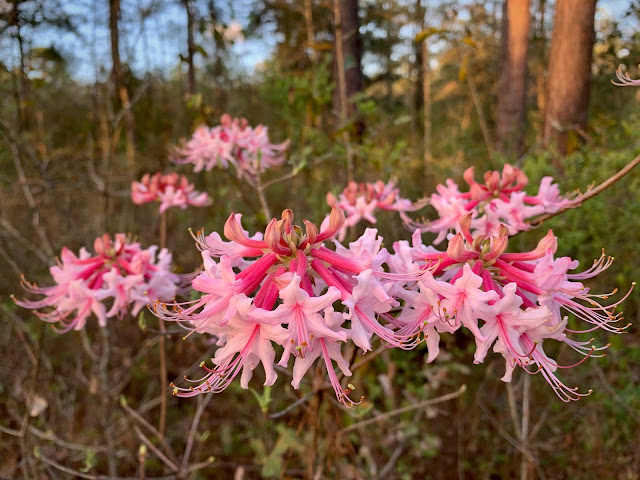Wednesday's Wildflower: Sweet Acacia
Vachellia farnesiana, formerly Acacia farnesiana
Submitted by John Holyland, Mangrove Chapter |
| Photo by John Holyland, Lemon Bay County Park, Englewood, Florida |
Sweet Acacia, (Pronunciation: uh-KAY-shuh far-nee-zee-AY-nuh), is a large shrub or small tree in the legume family. It is native to the Americas, including the Southern United States, Mexico, and the tropics. Sweet Acacia is fast growing and drought tolerant, making it good for landscapes, but it can suffer from root rot if too wet. As it is very thorny, with thorns on its trunks and branches, it should be placed away from walkways.
The oval yellow flowers, about 1-2 cm. in diameter, bloom in the winter. They are very fragrant and have a long history of being using to make perfume and scented ointments. The fruits are cylindrical green pods that will will turn purple as they age.
The thorny branches make good cover for birds and other wildlife, and bees love to forage in flowers.
Legend has it that Jesus’ Crown of Thorns came from a tree of the Acacia family.
 |
| Photo by Shirley Denton, FNPS |
______________________________________________________________________________
Editor's note: When I originally sent the notice of this blog to the
Wednesday Wildflower contributors, I had Acacia
farnesiana as the first mentioned scientific name. Roger Hammer corrected
me, so I asked him for the story of the name change. Here is his reply:
There was a taxonomic
revision in 2005 that placed members of the genus Acacia into
an earlier genus, Vachellia. The genus Vachellia was
named to commemorate Eleanor Vachell (1879–1948), a Welsh botanist who is
perhaps best known for writing the Flora of Glamorgan, one of
the 13 original counties of Wales. She was considered to have an unrivaled
knowledge of native plants in the United Kingdom and Ireland.
Here’s the lovely lady
now (ca. 1930s):
Links: FNPS: Native Plants for Your Area
USF Plant Atlas: Vachellia farnesiana




Comments